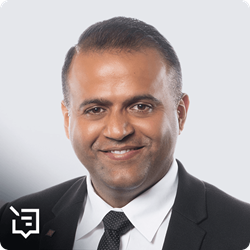It is an exciting time to be a cybersecurity professional in Australia. We have caught the attention of our global colleagues with our ambitious goal of becoming a global leader in cybersecurity by 2030, with our six cyber shields’ strategy to safeguard our nation.
The recent investment of A$5 billion by Microsoft to help Australia protect against and capitalize on opportunities presented by artificial intelligence has brightened the spotlight on our sector even further.
While cybersecurity—and achieving digital resilience—is an enormous priority for the Australian government, we wanted to learn what our global colleagues consider to be the best strategies and ideas to create a safer digital planet in 2024 and beyond.
Does Australia’s approach align with their own priorities and beliefs? Which of our six shields do they most resonate with?
Among the vast perspectives, which we’ll share in this blog post, there is widespread agreement that the six shields underpinning the government’s digital trust strategy are a smart approach, providing structure around what is a relatively young and growing sector compared to other parts of the world.
There is strong alignment between Australia’s plan and the initiatives global cybersecurity leaders would like to see implemented in their corner of the world, particularly those focused on awareness and education, enabling our citizens to defend themselves better.
A quick overview: what are the six cyber shields?
While the government is set to unveil more specifics around each shield over the coming months, we know they are focused on the following areas:
Shield 1 is to raise awareness of cybersecurity among citizens and businesses, increasing understanding of cyberthreats and the actions they can take to protect themselves to enable quick recovery following a breach.
Shield 2 will set a minimum cybersecurity standard for digital safety in products, requiring optimal security to be embedded in development from the outset. This shield will increase consumer and corporate confidence that when a digital product is purchased in Australia, it is safe to use.
Shield 3 proposes the exchange, in real time, of world-class threat intelligence sharing between government and business, enabling threats to be blocked before causing harm to Australian businesses and citizens.
Shield 4 focuses on protecting critical infrastructure and building reliable services including water, energy and healthcare.
Shield 5 will see an uplift in sovereign capabilities, with a focus on building a “thriving cyber ecosystem” with the right cyber skills in place. It will focus on building the cyber workforce, ensuring it is a desirable profession for young people.
Shield 6 will build a resilient region that recognizes that we are stronger when working in partnership with our neighbors to combat global cyberthreats. Australia will focus on enhancing global partnerships and support countries in our region that struggle with weaker cybersecurity controls.
Let’s delve into the perspectives of global cybersecurity leaders:
Confidence Staveley, United States
API Security Professional, Talent Developer, International Speaker, Gender Inclusion Advocate, Cybersecurity Woman of the World 2023, Fellowship 2021 Obama Foundation African Leaders
For Confidence, who is passionate about ensuring cybersecurity is a desirable profession now and into the future, Shield 5 resonates. Confidence places importance on early education and generating more apprenticeships for entry-level graduates. Financial incentives for organizations to foster diversity is also an initiative Confidence would like to see come to fruition to boost digital safety across the globe.
“As we strive to keep the data of our citizens and organizations safe, a holistic approach is key, addressing staffing, recruitment, training and education.
“When it comes to education, fostering an interest in technology and digital safety from a young age is paramount. Diversity in cybersecurity is not just an option but a necessity. There are a number of initiatives government departments and education bodies could implement at a national level, including cybersecurity challenges or competitions in schools and colleges, cultivating talent and curiosity early.
“I am also a strong believer in cybersecurity modules being introduced into school curriculums to educate students about digital safety, but also with a long-term vision to generate interest and boost an under-resourced sector.
“This could lead to the creation of talent incubators in schools to help interested students expand their knowledge, leading to an uptake of apprenticeships for entry-level graduates.
“Driving innovative cyber solutions relies on a diverse and inclusive team. One way to encourage organizations to boost diversity and demonstrate inclusion is to provide tax incentives for those organzsations actively expanding representation and inclusion in their cyber workforce. We know better informed research and the development of new cyber technology is the result of varying perspectives and thought processes, so helping organizations achieve this with financial incentives is a solid investment.
“As the Australian government implements its new cyber strategy, I think it’s important to recognize the commitment and investment required of organizations to adhere to new regulations, and this could be achieved by way of a certification. This would boost an organization’s reputation and credibility among key stakeholders, be it customers, suppliers and staff, but also help customers identify those organizations they feel safe doing business with.”
Alexandra Mercz, Singapore
Founder and former Chief of Staff, experience in global banking, fintech, consumer goods, International CISO and COO, champion for women in technology
Reflecting on what is needed to help combat malicious actors and improve resilience of the cybersecurity industry globally, Alexandra agrees with Australia’s six shields approach—in particular, Shields 1, 3, 5 and 6—with a focus on awareness, training, collaboration and education.
“The general public has enormous power to support cybersecurity experts, by increasing their own personal security and knowing when and how to report suspicious activity. A nationwide Cybersecurity Education and Awareness Program is integral to achieving long-term digital safety. This includes integrating modules into school curriculums, conducting corporate training and generating public awareness campaigns.
“We are stronger together, so exploring the potential for industry leaders to partner with citizens and small to medium size businesses offers many benefits. Offering free or subsidized access to premium cybersecurity tools ensures that every citizen and small business, irrespective of their technology skills or budget, has the means to equip themselves.
“Increasing the size of the global cybersecurity workforce, while ensuring true representation, is urgent. It is important that cybersecurity scholarships, sponsorships, mentorships, and growth opportunities are fairly distributed among all demographics, including underrepresented groups. We must continue to work with organizations focused on promoting underrepresented groups—including Women in Cybersecurity (WiCyS) and One In Tech—to ensure programs are tailored to support and attract a diverse range of cyber professionals.
“Australia’s Shield 3 focuses on advanced threat intelligence platforms that offer real-time analysis. Alongside this, I believe we must leverage Quantum Key Distribution (QKD) networks for ultra-secure communications between critical national infrastructures. A combination of advanced AI modeling can be used, such as Neural Network Time Series forecasting, and real-time global threat intelligence correlation from agencies like INTERPOL's Cybercrime Directorate.
“Ultimately, a strong solution to create a digitally safe planet is for nations to collectively address challenges across national borders, as Australia outlines in Shield 6. I support the creation of a ‘Global Cybersecurity Accord’ at platforms like the United Nations, where member countries commit to mutual defense against cyber threats, similar to NATO’s mutual defence principle. This would include not just sharing intelligence but also collaborating on research and development for cybersecurity solutions, creating a global shield against common threats.”
Dr. Carrine Teoh, Malaysia
CSO, Bond Holdings, VP of NTU Singapore Alumni Malaysia, Malaysian Women in Security, ASEAN Top 30 Women in Cybersecurity 2021
For Dr. Teoh, intelligence sharing and the need for clear reporting channels for citizens and companies are priorities.
“Sharing information and global trends is key to combatting malicious actors. For me, Shields 3 and 6 work hand-in-hand, as cross-border partnerships will naturally encourage sharing of information and global perspectives will assist local cybercrime investigations.
“If a breach does occur, citizens and businesses need clear reporting channels. This is becoming even more important as authorities adapt and increase regulations in the sector in response to an increase in attacks. I know many citizens and small businesses that feel helpless and unsure of next steps, and their responsibilities, if and when a breach happens.
“As we all grapple with an under-resourced sector, more role models are needed to teach, encourage and demonstrate to the younger generation what a cybersecurity role actually entails. Common misconceptions must be put to rest as we show the wide-reaching facets of our industry and excite graduates about the rewarding and challenging career that awaits.”
The insights from global experts reinforce our optimism for the future of our industry. While geographically we are very separate, there is alignment in our cybersecurity approach and similar emphasis on key areas that can drive real change, such as education, training and public awareness.
If there was ever a time for students or IT professionals from across the globe to consider a pathway into cybersecurity in Australia or anywhere in the world, it would be now. Demand is growing as organizations look to replicate and adhere to developing government policies, and we need a skilled, diverse and motivated sector to drive this.




